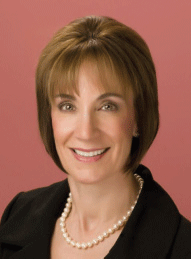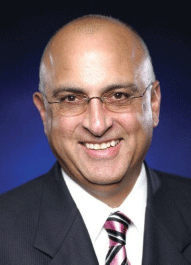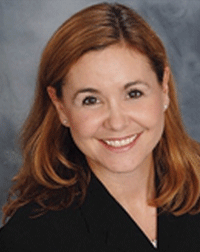With the advanced aging of our population and the increased need for medical eye care, various “integrated eye care” models have been developing all around the country. This article explains why and how integrated eye care has developed in the United States and what key benefits and limitations this practice model includes.
History of Integrated Eye Care
Optometry and ophthalmology have always had a working relationship––although, historically, this relationship operated at arm’s distance. For years, O.D.s made referrals to ophthalmologists with some lingering uncertainty about if or when the patient would return.
Traditionally, optometrists have concentrated on vision care needs while ophthalmologists have been the sole providers of medical specialty eye care. But, during the last 30 years, there has been a significant change in the scope of optometric practice with the expansion into medical eye care as well as the development of multiple optometric subspecialties.
Advantages of Integrated Eye Care Delivery
• Utilizes the strengths of each practitioner.
• Improves efficiency in patient care.
• Establishes a natural checks-and-balances
system.
• Provides a better understanding of patient
needs.
• Matches the procedure to the patient.
• Enhances profitability.
• Increases surgical volume.
Currently, optometrists in all 50 states can prescribe topical ocular medications. Additionally, O.D.s in all but three states (Florida, Massachusetts and New York) can prescribe oral medications. And more recently, the optometry boards of West Virginia and Kentucky won legislative battles that expanded the current scope of practice. With these changes, the relationship between optometry and ophthalmology has evolved into the wider integrated eye care model that we commonly see today.
The Numbers
Before we can discuss the need for integrated eye care, we must discuss the current and future demographics of practicing optometrists and ophthalmologists. Each year, more than 1,200 O.D.s graduate from American optometry schools. There have been numerous debates on whether the increased number of graduates is justified and legitimately required, or if it will inevitably lead to an oversupply of practicing optometrists. In 2008, there were approximately 34,800 practicing optometrists with a projection of 43,200 by 2018––a growth rate of 24%.2
Looking at the other side, the number of U.S. ophthalmologists is expected to increase from 15,000 in 2008 to 15,101 by 2015. This change includes an estimated addition of 3,124 new ophthalmologists over the seven-year period and the anticipated retirement of 3,023 ophthalmologists.2
Common Issues Faced in the
Integrated Eye Care System
• Need for constant, seamless
communication.
• Patients sometimes do not understand the
different role each practitioner plays.
• Inherent complexity of the O.D./M.D.
relationship.
• Some laws affect the ability to provide
patient care.
From 2008 to 2015, the number of cataract/IOL surgical procedures alone will increase from an estimated 3,092,000 to approximately 3,851,000.3 Additionally, patients requiring treatment for vitrectomies, refractive surgical procedures, glaucoma management, macular degeneration and vision-threatening diabetic retinopathy will also increase, justifying the need for the expanded role of optometrists to address the non-surgical aspects of these conditions.
Just looking at the numbers alone, now more than ever, the contributions of each profession will be needed to adequately care for our patients.
The Value of the O.D. in Comanagement
The importance of each primary care optometrist remaining involved throughout the referral process cannot be over-emphasized. Here’s why:
• Optometrists have gained a level of trust and familiarity with their patients. No one has a better understanding of patients’ visual needs, requirements and ocular/medical history. We help educate our patients about their conditions, the reason for the referral and the treatment options available. We communicate the knowledge of our patients’ conditions as well as their preferences back to the surgeons. And, we plan on seeing these patients return to us.
• Continuous communication between the referring optometrist and ophthalmologist serves as a check-and-balance system for patient care, drug interactions and/or potential surgical complications.
• Optometrists serve as the care coordinator for patients with multiple disease states who see a variety of specialists. A similar example would be a primary care physician who coordinates care between a cardiologist, optometrist and neurologist.
• Optometrists serve as an additional resource for patients, should problems arise. Many times, it is much easier and more convenient to see us than to see a busy surgeon.
Integrated Eye Care Models
So, the question remains––what is integrated eye care? An integrated eye care practice can take many forms, and it is up to all care providers to determine which model best fits their patients and their practice needs. By our assessment, there are four basic integrated eye care models:
• Optometrists in private practice who actively comanage patients.
• Optometrists who work directly with ophthalmologists in a referral center.
• Optometrists who partner/employ/lease space with ophthalmologists.
• Optometrists who practice in a vertically-integrated setting (O.D./M.D./optical).
Private Practice Optometric Comanagement Model
The private practice optometric comanagement model is the most common form of integrated eye care. Optometric comanagement shares the responsibility of patient care through optometric referral networks and ophthalmologists. In this relationship, optometrists refer patients solely for secondary/tertiary care.
Depending on the practice type, location, insurance coverage and individual situation, optometrists have the opportunity to participate in both the perioperative and long-term care of patients.
Perspectives from an O.D. in Private Practice
• Sherri Becker, O.D.; Becker Eye Care, Hampton, Va.
 Integrated eye care delivery provides full service care to patients, including primary, secondary and tertiary. This can be accomplished either in one practice or in the model that I use––teaming with a referral center.
Integrated eye care delivery provides full service care to patients, including primary, secondary and tertiary. This can be accomplished either in one practice or in the model that I use––teaming with a referral center.
I have an excellent relationship with the ophthalmologist referral center. I perform primary and some secondary eye care, and the ophthalmologists provide secondary and tertiary eye care. Each M.D. has a specialty and is therefore an expert in their area. The advantage of this model is that patients are provided with all levels of eye care, which reduces the duplication of more general services. The end result is more efficient and cost-effective care for the patient.
However, one limitation of this model is that extreme consideration must be taken to ensure continuous and uninterrupted patient care. So clear, consistent communication between all comanaging clinicians is a must.
For those practitioners who focus specifically on refractive and vision needs, referrals are made to address only medical eye conditions, such as glaucoma and retinal disease. The referring optometrist will see their patients for future primary eye care needs. In cases where patients may need additional testing or imaging, a referral center can be used as an extension of the optometrist’s practice to have necessary tests performed without seeing a specialist. Patients benefit from the comanagement model because their optometrist always remains the quarterback of their care.
Referral Center Comanagement Model
Optometrists in a referral center facilitate the care and communication between the private practice O.D. and the ophthalmic surgeon. In addition to clinical care, many optometrists serve administrative roles and support optometric referral networks. The only care that is provided by optometrists in a referral center is purely medical in nature, including pre- and postoperative treatment (cataract, refractive, etc.). Perioperative optometrists serve as a valuable resource for answering questions about surgical requirements, complications and postoperative management, as well as addressing patient concerns from the referring doctors.
Referral centers provide minimal to no long-term eye care, and patients are always sent back to the referring O.D. as soon as it is safe to do so. Additionally, there is no conflict of interest regarding refractive care, so patients must return to their referring optometrists for any optical needs.
| Perspectives from O.D.s in a Referral Center |
• Paul Ajamian, O.D.; Center Director of Omni Eye Services, Atlanta
 Integrated eye care is a group of doctors with different specialties who work together for the common good. Within our model, the relationships that we have with ophthalmology are, for the most part, very good. But, as in any relationship, it is easier to work with some people more than others, which can be both an asset and a challenge. Integrated eye care is a group of doctors with different specialties who work together for the common good. Within our model, the relationships that we have with ophthalmology are, for the most part, very good. But, as in any relationship, it is easier to work with some people more than others, which can be both an asset and a challenge.
The advantage of our referral facility is the constant communication between our practice and our referring O.D.s. Being a teaching facility, we work closely with fourth-year student externs and residents. This environment helps them understand the working relationships we have with ophthalmology. One of the limitations of our model is that we cannot (and will not) see patients without a referral from an O.D. While many practices make money from dispensaries and direct referrals, we do not. Unfortunately, our loyalty to the model doesn’t really mean as much as it should to O.D.s these days. For instance, some O.D.s refer to M.D. practices that have large optical dispensaries or that market directly to the public. By doing so, they are sending patients (and potential revenue) to their competition, which doesn’t make sense and doesn’t help promote the private optometric practice. • Tracy Swartz, O.D., M.S.; Center Director of Vision America, Huntsville, Ala.  I believe that the integrated eye care concept is exemplified as: primary care delivered by an optometrist; surgery performed by ophthalmologists; and communication facilitated by both parties. Both functional and medical needs are met efficiently using support staff, and the referral center is viewed as an extension of the optometric practice. I believe that the integrated eye care concept is exemplified as: primary care delivered by an optometrist; surgery performed by ophthalmologists; and communication facilitated by both parties. Both functional and medical needs are met efficiently using support staff, and the referral center is viewed as an extension of the optometric practice.
The advantage of our model is the full scope of practice that is enjoyed by both optometry and ophthalmology, which is encouraged by consistent continuing education and case consultation. Optometrists who take ownership of the medical practice model fully support it, and the surgeons do well within their area of specialty without the hassle of primary care. The limitation of our model is that the optometric advisory board is not directly associated with the center or the M.D.s; yet, the board is permitted a level of authority regarding center operations. That authority includes the ability to govern the direction of the practice as well the capacity to terminate M.D.s and O.D.s. Additionally, working with surgeons can be trying at times, because individual personalities vary. Most interestingly, many of our M.D.s have met resistance from their peers for supporting optometry. • Chris Freeman, O.D.; Clinical Director at TLC Laser Eye Centers, Oklahoma City  I define integrated eye care as optometry and ophthalmology working together to provide convenient, competent patient care in both surgical and medical comanagement. Each profession has its strengths and limitations when it comes to a patient-first philosophy, where the care provided by one side can nicely complement that of the other. This relationship is very similar to how an internist may work with a cardiologist or endocrinologist. I define integrated eye care as optometry and ophthalmology working together to provide convenient, competent patient care in both surgical and medical comanagement. Each profession has its strengths and limitations when it comes to a patient-first philosophy, where the care provided by one side can nicely complement that of the other. This relationship is very similar to how an internist may work with a cardiologist or endocrinologist.
The main advantage of integrated eye care is working off of one another’s strengths to accentuate the positives in overall patient care. Many patients have seen their primary eye care providers for several years, and are most comfortable continuing to see them for future routine care. Our comanagement model fosters this continuity of care. For surgeons who like to do surgery and non-surgeons who like to do eye exams, this setup works well. Another advantage is pre-screening by the referring doctor for refractive surgical procedures. Patients can be screened for keratoconus or ocular surface disease, be treated accordingly, and referred for surgical care if appropriate. Such early detection and counseling can make for a more streamlined patient experience and better results. The biggest limitation for our model is patient logistics. For some patients––depending on where they live––it would be easier to perform all their surgical testing at the same time as the preoperative exam with their referring eye doctor. Another limitation is communication. With more people involved in the process and with busy doctor schedules, there may be occasional communication breakdowns, which can result in some redundant counseling or testing. |
Partnered/Employee Comanagement Model
Another aspect of integrated eye care occurs when optometrists either hire surgeons to work within their practice or lease office space to ophthalmologists. This arrangement most often occurs in rural or small-town settings where there is an undersupply available surgeons––although this doesn’t have to be the case. Optometrists maintain their own practice and utilize surgeons on a weekly, biweekly or monthly basis to provide additional care. This way, patients do not need to be referred elsewhere or drive several hours to receive care.
Perspectives from O.D.s who Partner with or Employ M.D.s.
• Greg Moore, O.D.; Clinical Director of West Virginia Laser Eye Center, Charleston, W.Va.
 In my mind, integration is not as much “between me and my surgeons,” as it is “between the surgeons and the referring O.D.s.” The total integration of care throughout a community puts patients in the hands of the provider who is best suited to care for them. Clinical eye care is the domain of the optometrist, and the operating room is the domain of the surgeon. Reducing the surgeon’s chair time increases his or her time in the operating room. And, in this capacity, patients are given the best available care in both the clinic and the operating room setting.
In my mind, integration is not as much “between me and my surgeons,” as it is “between the surgeons and the referring O.D.s.” The total integration of care throughout a community puts patients in the hands of the provider who is best suited to care for them. Clinical eye care is the domain of the optometrist, and the operating room is the domain of the surgeon. Reducing the surgeon’s chair time increases his or her time in the operating room. And, in this capacity, patients are given the best available care in both the clinic and the operating room setting.
One prerequisite of integrated care is that there must be mutual respect and genuine appreciation for the other parties involved. Patients can detect if the relationships between clinicians are uneasy or unprofessional.
The advantage of our practice model is that our surgeons can perform a high number of procedures on patients who are first evaluated by the O.D. Consequently, we are able to increase the productivity of our surgical center, which helps to improve postoperative outcomes and overall patient satisfaction.
• Jill Autry O.D., R.Ph.; Partner, Eye Centers of Texas, Houston
 Integrated eye care utilizies the training and capabilities of all types of eye care professionals––from ophthalmologists and optometrists to ophthalmic assistants and technicians––in a combined, collaborative approach. Because we don’t provide primary care, refractions or contact lenses, it is the O.D.’s responsibility to triage patients, perform pre- and postoperative care, and provide follow-up care for optometrist-referred patients. Each O.D. partner also has various office responsibilities as well as optometric comanagement duties.
Integrated eye care utilizies the training and capabilities of all types of eye care professionals––from ophthalmologists and optometrists to ophthalmic assistants and technicians––in a combined, collaborative approach. Because we don’t provide primary care, refractions or contact lenses, it is the O.D.’s responsibility to triage patients, perform pre- and postoperative care, and provide follow-up care for optometrist-referred patients. Each O.D. partner also has various office responsibilities as well as optometric comanagement duties.
One advantage of this model is that our O.D.s act as liaisons between the community O.D.s and the surgeons in our practice. This allows our optometrists to practice completely on the medical side of eye care as well as provide a safe haven for the local optometrists.
The main drawback for our referral center model is the lack of long-term patients. Most of our patients are taken care of and returned to their referring physician without the development of longer, personal relationships.
Vertically-Integrated Comanagement Model
Within a vertically-integrated practice, O.D.s address all aspects of primary eye care, prescribe glasses and contact lenses, and treat a variety of disease states as their comfort and licensure allows. If a condition falls outside of the scope of optometric practice, patients are referred to an ophthalmologist who can concentrate on advanced disease management and surgery.
In this modality, each party complements the other, which improves overall efficiency while keeping the patients in the same practice. Ancillary staff members contributing to this model include certified ophthalmic technicians and opticians.
Perspectives from an O.D. in a Vertically-Integrated Practice
• Scott Hauswirth, O.D.; Minnesota Eye Consultants, Minneapolis
 To me, integrated eye care means having a center where both optometry and ophthalmology work side-by-side in a collegial fashion to solve the problems presented to us by our patients. Our practice has multiple M.D.s, and our relationships with them are very good. There is mutual respect and exchange of ideas on how to best care for patients.
To me, integrated eye care means having a center where both optometry and ophthalmology work side-by-side in a collegial fashion to solve the problems presented to us by our patients. Our practice has multiple M.D.s, and our relationships with them are very good. There is mutual respect and exchange of ideas on how to best care for patients.
The advantage of our model is the efficiency of care. Patients have easy access to optometrists as the front line of eye care, and we can refer to the ophthalmologists for surgical needs. This keeps our surgeons doing more surgery, and our O.D.s are empowered to provide clinical care at a very high level. Our model also provides access to developing technologies and fosters new and innovative treatment options that are not always initiated or implemented by the ophthalmology side.
I think the only limitation of our model comes from those individuals who do not understand what can be accomplished by working together. In a mutually supportive environment, everyone succeeds––our patients, our doctors and staff, our practice and our professions as a whole.
The result of a vertically-integrated practice is efficient treatment and surgical stabilization of patients. When a patient sees the surgeon for a preoperative exam, there are no delays or surprises. This process facilitates a regimented and reliable preoperative exam process and streamlines scheduling for the patient and the surgeon. Additionally, the surgeon’s clinic time is minimized, allowing more operating time to be scheduled.
Although there is no singular definition of what constitutes integrated eye care, we definitely have noticed improved relationships between optometry and ophthalmology. Ultimately, this has resulted in better care for our patients.
With the additional emphasis in ocular disease treatment and management in optometric education, O.D.s are adequately prepared to diagnose and treat the majority of conditions that we see in our clinics.
When conditions fall outside of the scope of practice or the comfort level of our peers, we have working relationships with our colleagues in ophthalmology to help address these concerns. With optometry being a clinically based practice, and ophthalmology being heavily surgical in nature, we are seeing the two professions utilize each other’s strengths––even under the same roof. Unquestionably, the most successful integrated practices will follow the theory of “let clinicians be clinicians, and let surgeons be surgeons.”
Dr. Cunningham is the director of research and optometry at Dell Laser Consultants, in Austin, Texas. Dr. Whitley is the director of optometric services at Virginia Eye Consultants, in Norfolk, Va.
1. Cunningham D, Whitley W. Integrated eye care in the United States. Available at:
http://bmctoday.net/crstodayeurope/2011/06/article.asp?f=integrated-eye-care-in-the-united-states (accessed February 15, 2012).
2. Bureau of Labor Statistics. U.S. Department of Labor: Occupational Outlook: 2010-2011. Optometrists. Available at:
www.bls.gov/oco/ocos073.htm (accessed February 15, 2012).
3. Harmon D, Merritt J. Market Scope, LLC. Demand for ophthalmic services and ophthalmologists––a resource assessment. Available at:
http://www.meditec.zeiss.com/C1256CAC0038CEFF/EmbedTitelIntern/Market_Resource_White_Paper_04-2009/$File/Market_Resource_White_Paper_04-2009.pdf (accessed February 15, 2012).

